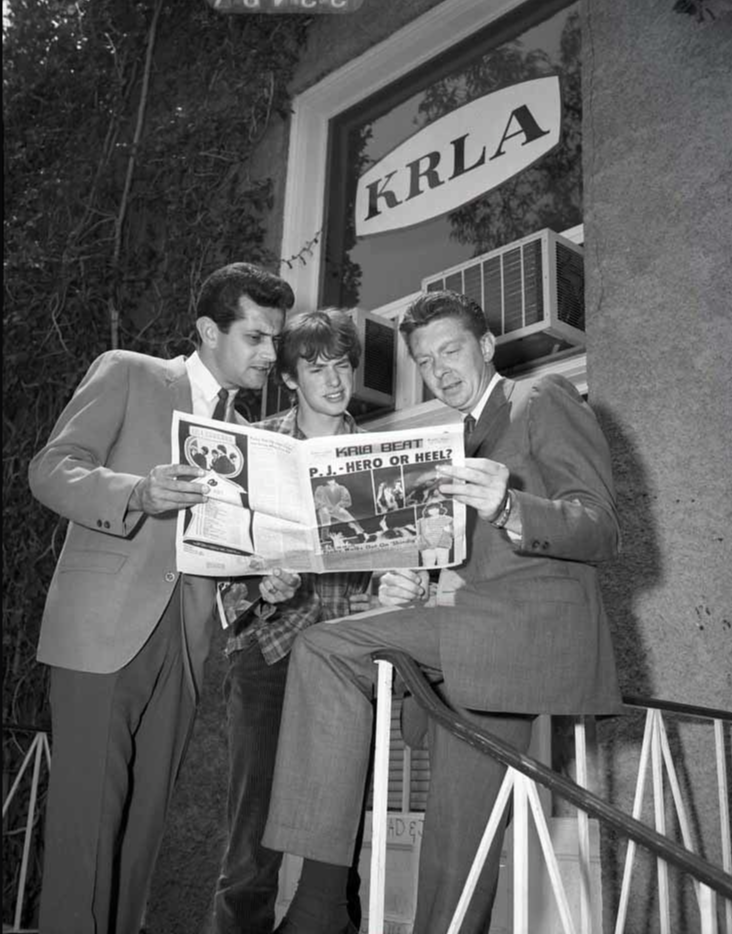KRLA and the Beat history
KRLA personalities
KRLA specialties
Aftermath

KRLA had a long and robust history after its heyday in the 1960s and after the KRLA Beat folded in May 1968. Some of the original deejays left for greener pastures, of course -- Bob Eubanks being a prime example, making his way as a successful entrepreneur and TV show host.
Some stayed and toughed it out as music changed and shifted into new realms -- and as FM radio began to overtake AM as the preferred radio medium. With its clearer signal and album-oriented playlists, ratings suffered against rival KHJ. KRLA's old nemesis KFWB changed format to all news in 1968.
And KRLA's John Barrett left KRLA in January 1969 with newsman Cecil Tuck to pursue consulting and management options in television and beyond. KRLA wasn't rudderless, exactly, but it was a definite break with the past.
Johnny Hayes, perennial stand-in hired in 1965, had his own following during the 1970s through the 1990s. Other personalities well known over the years, some veterans from far-flung stations around the United States, included Jimmy Rabbitt, Lee "Baby" Simms, Russ O'Hara, Laura Gross, Manny Pacheco, Wolfman Jack, and Dick "Huggie Boy" Hugg.
Art Laboe came back for an extended return engagement at KRLA where the shifting emphasis back to oldies suited him. Having flirted briefly with an all-request format in 1966, the station returned to it in the 1970s where this engagement with its audience made KRLA once again a unique presence on the airwaves. Laboe no longer had to be a roving disc jockey. The phone lines brought the audience to him.
In 1981 KRLA tried an unusual promotional idea: hiring some of the 1960s classic deejays to return for a weekend stint at the microphone. Bob Hudson sounded delighted to be on the air again. Casey Kasem sounded a little terrified. Dave Hull was in his element, and why not? He was hired to continue with KRLA as an original personality playing oldies, at least until 1985, when he flew the Carriage House at the Huntington Hotel in Pasadena for greener pastures.
Throughout the 1980s and 1990s KRLA continued to have a tight relationship with its listenership, despite inroads by FM stations like KRTH, whose oldies format had the advantage of higher fidelity afforded by frequency modulation. In 1998 KRLA abandoned its music programming and changed to talk radio, recycling shows from other venues.
Then, in a dizzy reconnoitering of call signs and frequencies, it changed to KSPN in 2000 and became an audio outlet for ESPN the sports network; KDIS from 2003-2017, when for good measure it jumped to 710 kHz as a sports station, with Radio Disney remaining at 1110 kHz with essentially a children's format. The station became KRDC in 2017 and those call letters reamin in place at the present, simulcasting KSPN. In 2023 the station (call letters and all) was sold to the Salem Media Group and broadcasts a format of Christian/conservative based talk and news programming.